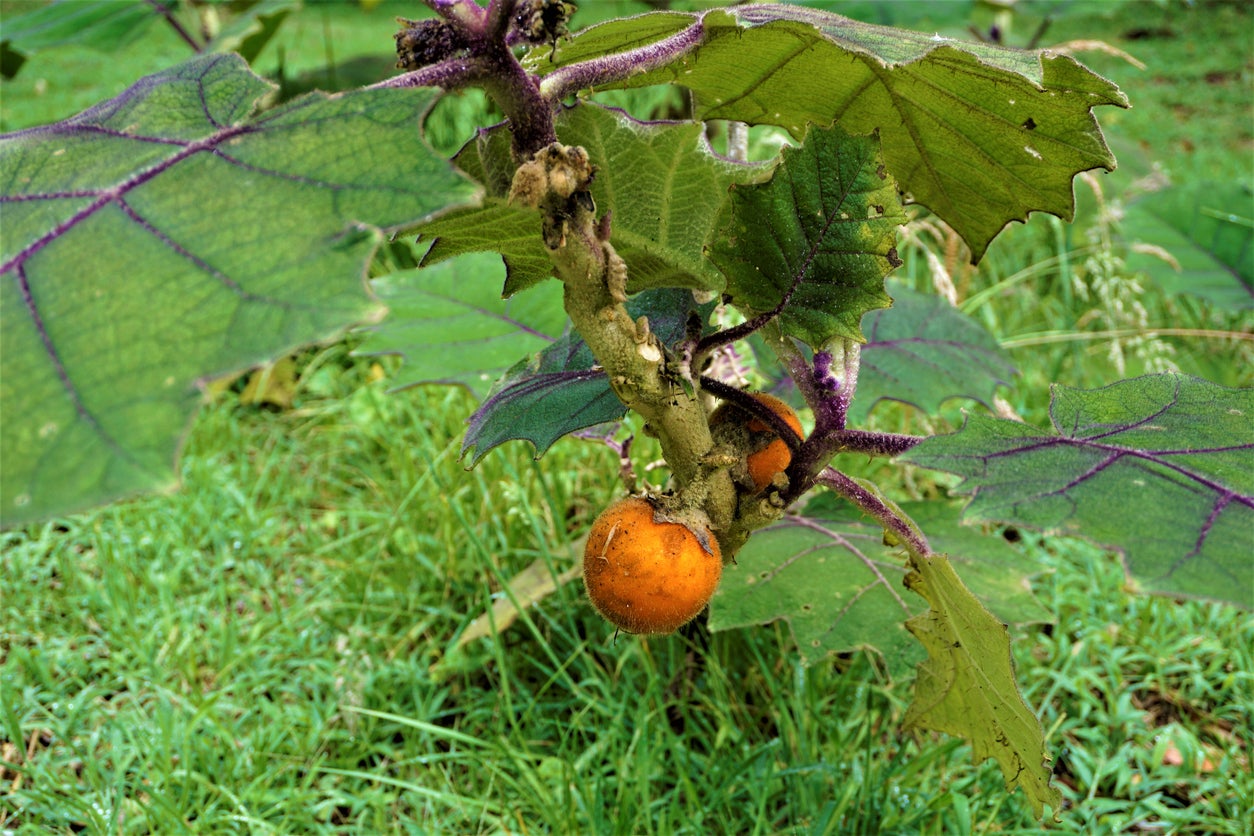Feeding Naranjilla Plants – How And When To Fertilize Naranjilla


Noted for its unique appearance, the naranjilla plant is a medium sized, herbaceous shrub native to South America. Growers choose to plant naranjilla for a variety of reasons, including for harvest of the fruit, as well as for the visual appeal offered by its highly attention-grabbing leaves. While the plant’s thorns and spines may make harvesting the fruit difficult, it is truly a unique garden specimen – and one with specific nutritional needs. Read on for tips on how to feed naranjilla.
Naranjilla Fertilizer Needs
Naranjilla plants are an excellent addition to the home garden for those who grow in subtropical regions, as well as anyone wishing to add new and lesser known plants to their collections. Whether grown in the ground or cultivated in containers, naranjilla plants do have some special requirements in which to truly thrive. Among these, most importantly, is the specific needs when it comes to fertilizing naranjilla plants. The plants prefer rich soil high in organic content, such as compost, which can normally provide enough nutrients. Naranjilla plants are heavy feeders, though, and grow rapidly. Likewise, you can simply give them a dose of manure tea every so often, which should adequately provide for the nutritional needs. Monthly or bi-monthly applications of an NPK fertilizer can also be given, especially in areas with poor soil, at the recommended rate of 3 ounces (85 g.) per plant.
How to Feed Naranjilla Plants
Due to their fast-growing nature, most naranjilla plants are propagated from seed before being transplanted into the garden (or into containers). When to fertilize naranjilla plants may be a difficult question to answer for many growers though. Since these plants are, in fact, very heavy feeders, most growers begin a steady routine of feeding naranjilla after plants have become established. This may vary depending upon the growing conditions in your own garden. Generally, naranjilla fertilizer needs should be met throughout any period of active growth for the plant. This is especially true throughout the summer months before the plants begin to set fruit. When it comes to fertilizing naranjilla, many growers choose a fertilizer that contains a balanced amount of nitrogen, potassium, and phosphorous. Feeding naranjilla on a monthly basis should meet the needs of this demanding plant. With adequate fertilization, protection from extreme heat, and ample water, growers should expect lush plants and abundant harvests of naranjilla fruits.
Sign up for the Gardening Know How newsletter today and receive a free copy of our e-book "How to Grow Delicious Tomatoes".

Tonya Barnett has been gardening for 13 years. Flowers are her passion. She has transformed her backyard into a cut flower garden, which she regularly chronicles on her YouTube channel http://www.youtube.com/@tonyawiththeflowers.